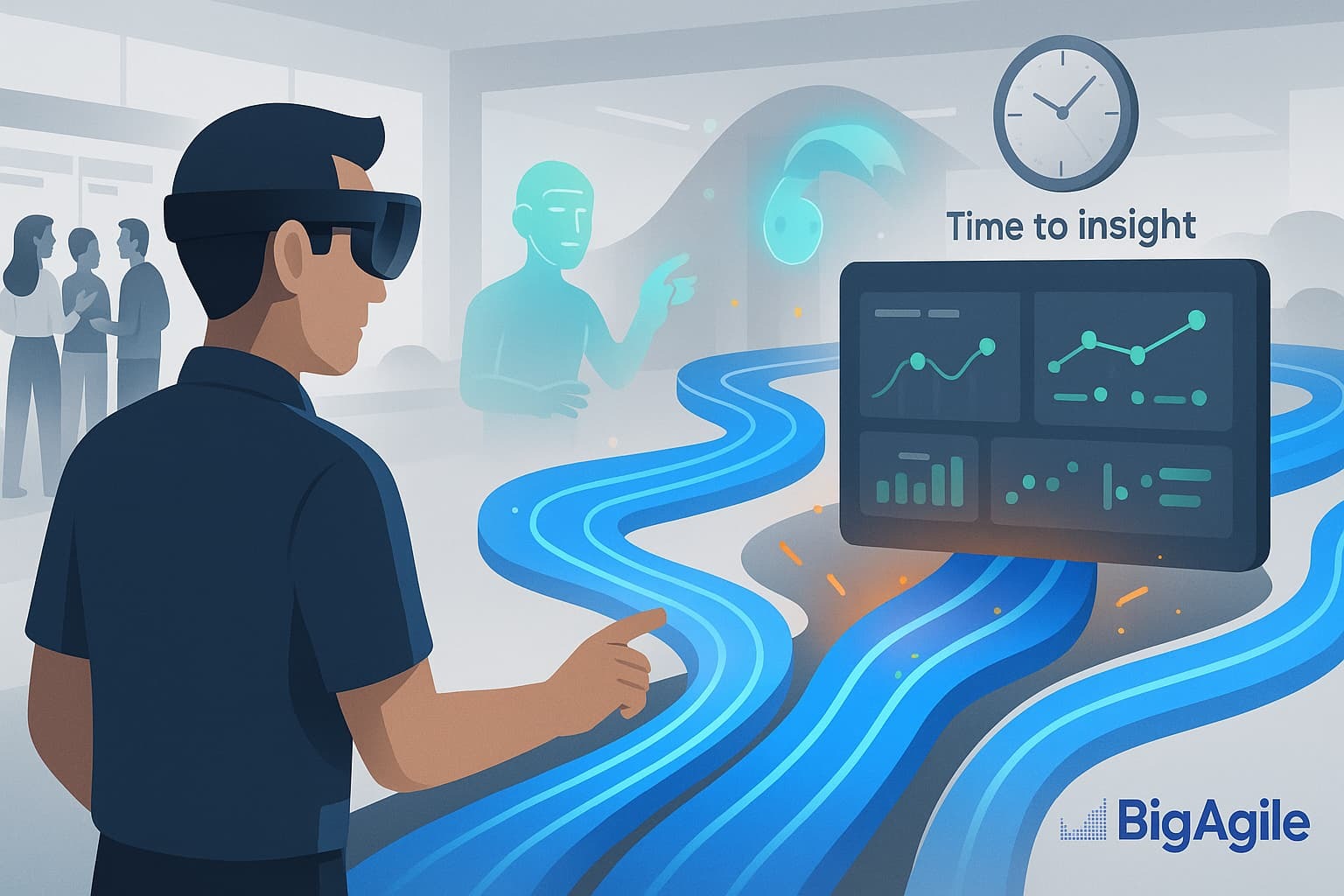
Did You Know?
Dataconomy’s June 12, 2025, primer defines a data engineer as the IT specialist who “designs, builds, and maintains the data pipelines that make analytics possible”.
Core duties include:
- Developing and maintaining ingestion pipelines and validation routines
- Designing scalable, reliable data-platform architecture
- Collaborating with data-science and product teams to ensure fit-for-purpose data
To achieve this, data engineers blend deep technical skills; SQL/NoSQL, Python/Spark, ETL tooling, with softer talents in problem-solving, communication and prioritization.
Demand is exploding: average U.S. salaries top $129k, and certified talent is scarce.
So What?
- Data-to-value flow is the new constraint. Reinertsen reminds us that bottlenecks, not capacity, drive the economics of flow. In most firms, that bottleneck is now trustworthy, well-governed data. Without the engineering layer, Lean, Agile, or Gen-AI initiatives stall in a queue of “dirty data.”
- Competitive strategy shifts from what you know to how quickly you know it. Porter shows that cost-leadership and differentiation are both powered by information flow. Data engineering transforms raw exhaust into real-time signals, collapsing decision latency and enabling hyper-segmented value propositions.
- Change leadership is essential, not just about plumbing. Kotter's step 1, build urgency, applies here: leaders must elevate “data debt” as a visible risk to spark action. ADKAR tells us that every engineer we hire or upskill needs Awareness, Desire, Knowledge, Ability, and Reinforcement to thrive in a modern data platform.
- Collective intelligence (“superminds”) beats lone experts. Malone’s research shows that teams blending humans and machines outperform either alone. Data engineers provide the connective tissue that allows analytics, Gen-AI co-pilots, and domain experts to act as one supermind.
Now What?
Let's look at a lean, flow-oriented action plan; small, testable steps any organization can take to unblock data value streams and embed new behaviors at scale.
| Step | Action | Lean-Flow Rationale |
|---|---|---|
| 1 | Map your data-value stream, from source to decision; expose queues, rework, manual hand-offs. | Visualises hidden WIP; creates Kotter-style urgency. |
| 2 | Define minimum viable platform (MVPf), small-batch, testable slices of ingestion → storage → serving. | Reduces batch size & cycle time (Reinertsen). |
| 3 | Stand-up a cross-functional Guiding Coalition, data engineer, product lead, ML scientist, ops & compliance. | Kotter step 2; supports Supermind collaboration. |
| 4 | Upskill via “ADKAR Sprints” pairing live backlog items with micro-learning on Spark, dbt, Airflow, data contracts. | Embeds Knowledge & Ability while delivering value. |
| 5 | Institute flow metrics; lead time from data arrival to first model inference; % automated data tests passed. | Turns abstract quality goals into actionable feedback loops. |
| 6 | Reinforce & scale. Celebrate “short-term wins,” codify patterns in a Data Engineering Playbook, rotate engineers across lines of business. | Anchors new behaviors in culture (Kotter step 8). |
Catalyst Questions for Leaders
Great transformation depends on the questions leaders pose. Utilize the following table to inspire open dialogue, uncover hidden risks, and align teams on the outcomes that matter most.
| Leadership Question | Probing Prompt |
|---|---|
| Where are our data queues longest, and what do they cost per week of delay? | Which revenue or compliance risks sit behind those queues? |
| How will our competitive positioning shift if we cut data-to-insight lead time by 50%? | Would we choose cost leadership, differentiation, or both? |
| Do we have an ADKAR plan for every role touched by the data platform (not just engineers)? | Where is Desire weakest? |
| Which decisions still rely on intuition because data is “not ready”? | What engineering or governance gap blocks readiness? |
| How will we measure and reward end-to-end data-value flow, not silo KPIs? | Can we visualize flow metrics on the exec dashboard? |
In a world where AI-driven advantages rely on the speed and integrity of your data, investing in strong data engineering capabilities is no longer optional; it is foundational. The best strategies, models, and dashboards collapse without reliable pipelines and a culture that values end-to-end flow.
By mapping value streams, empowering cross-functional teams, and measuring lead time from data arrival to insight, organizations unlock compounding returns: faster decisions, reduced risk, and enhanced customer value. Leaders who act now will transform today’s data debt into tomorrow’s competitive advantage; while those who wait will pay a premium for insights they could have developed in-house.
The choice is clear: engineer the flow, or be engineered by the market.